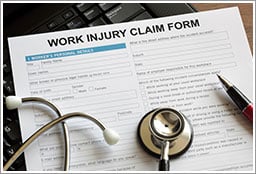 As I drive throughout the great state of Wisconsin, I have noticed more and more roundabouts popping up. I’m sure you’re likely familiar with what a roundabout is, yet for those who haven’t attempted to navigate the circular spiral of traffic, it’s simply a replacement for a standard four-way intersection meant to keep vehicles flowing with the elimination of stop signs and traffic lights.
As I drive throughout the great state of Wisconsin, I have noticed more and more roundabouts popping up. I’m sure you’re likely familiar with what a roundabout is, yet for those who haven’t attempted to navigate the circular spiral of traffic, it’s simply a replacement for a standard four-way intersection meant to keep vehicles flowing with the elimination of stop signs and traffic lights.
Now, judging from how many cars I idle behind at roundabout yield signs, over-hesitant to push forward, you’ll probably think I’ve taken in an abundance of gas fumes when I say, “I love roundabouts.”
So, for those of you who do not share my same excitement for roundabouts, perhaps I can list a few of the many benefits they provide:
- Simplifies the pedestrian’s visual environment – this prevents pedestrians from getting hit – pretty good reason for me.
- Reduced driver confusion with perpendicular junctions – we all seem to forget who goes first when two or more cars get to a four-way stop sign at the same time.
- Reduced queuing associated with traffic lights – the American commuter spends 38 hours a year idling at traffic lights – enough said.
- Allows for U-turns within the normal traffic flow – there’s no telling how many times I miss my turn and can’t turn around anywhere.
- Due to less time idling than signaled intersections, they reduce pollution – we’re all breathing the benefits.
- They make less traffic noise with braking and start-up noise – especially those of you driving muscle cars and Harleys.
- They eliminate perpendicular/T-bone crashes – probably one of the biggest benefits of all.
So with all the positives, why are there so many who haven’t jumped into the acceptance lane?
My thought, no one has taught a course on how to navigate one properly. Thinks about it, when these circular patterns started appearing, did anyone host a class on how to best use?
The same, unfortunately, holds true for Health Savings Accounts (HSA). Healthcare rates are increasing at an uncontrollable rate and too many people are not reaping the multitude of benefits and cost savings by merging on to the HSA Highway.
A Health Savings Account is very similar to a roundabout in that there are a myriad of advantages:
- Used to meet your deductible – it’s inevitable, deductibles aren’t going anywhere, yet at least there’s more opportunity to help offset the cost.
- Portable, go with you wherever you go – Just in case a new career opportunity presents itself, your HSA funds never need to be part of the consideration process.
- Tax deductible off of gross income - Who doesn’t like keeping a little more for themselves?
- Grow tax-deferred - We’re on a roll.
- NEVER taxed when used for qualified medical expenses - This whole “keeping more of my money” just keeps getting better.
- Roll over year after year -- no "use it or lose it" – awesome – now who wants to buy the numerous, unopened heating pads I purchase every year to avoid losing money in a standard, use-it-or-lose-it, Flexible Spending Account.
If you’ve been hesitant to jump onto the HSA Highway or currently have a High-Deductible HSA plan, yet don’t feel the benefits are being noticed, I would be happy to introduce you to R&R Insurance’s HSA strategy. With our turbo-drive approach, we’re putting the brakes on rising healthcare costs, pushing the pedal with employee engagement, moving the speedometer on consumerism, and putting both employers and employees back in the driver’s seat and in control of their health spend.
Now, my wife will not recommend you take roundabout driving lessons from me, yet I’m happy to help with roundabout navigation, or, what I am better suited for, benefiting from a HSA.
Knowledge starts with the knowing – I invite you to come know HSA’s with us.
Contact a KnowledgeBroker for additional information.

 Are you removing your storage tank from service?
Are you removing your storage tank from service? Henry Ford once said “chop your own wood and it will warm you twice.” I’m here to tell you now’s the time to evaluate your pre-loss and post loss workers compensation strategies and it will warm you even more.
Henry Ford once said “chop your own wood and it will warm you twice.” I’m here to tell you now’s the time to evaluate your pre-loss and post loss workers compensation strategies and it will warm you even more. In order to take a closer look at Employers Liability (EL), let's start with the basics of Workers' Compensation. Work Comp applies to bodily injury or disease caused by a condition of your employment. There are no limits for work comp. In addition, the state helps to regulate the amount paid out for workers compensation benefits.
In order to take a closer look at Employers Liability (EL), let's start with the basics of Workers' Compensation. Work Comp applies to bodily injury or disease caused by a condition of your employment. There are no limits for work comp. In addition, the state helps to regulate the amount paid out for workers compensation benefits. With increasing news of violence in the workplace, would you recognize the signs of a co-worker ready to snap? The most recent incident where two news reporters were killed on-air has raised questions regarding liability of workplace safety.
With increasing news of violence in the workplace, would you recognize the signs of a co-worker ready to snap? The most recent incident where two news reporters were killed on-air has raised questions regarding liability of workplace safety.


 Business Insurance® named R&R Insurance Services, Inc. as one of the Best Places to Work in Insurance for 2015.
Business Insurance® named R&R Insurance Services, Inc. as one of the Best Places to Work in Insurance for 2015.
